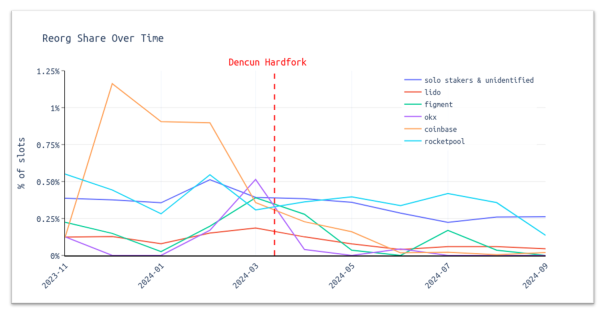Today, enjoy the 0xResearch newsletter on Blockworks.co. Tomorrow, get the news delivered directly to your inbox. Subscribe to the 0xResearch newsletter.
Why bitcoin ETF flows matter
As we approach the mid-point of October, net inflows for the US bitcoin ETFs have flipped into positive territory for the first time this month.
Bitcoin ETFs notched $253.6 million in net inflows on Friday, breaking a three-day negative streak. They ended the week with a solid net of $348.5 million.
ETF flows provide insights into bitcoin price movements, acting as a potential indicator of directional trends, according to David Lawant, head of research at FalconX.
In addition to a correlation between BTC price and ETF flows overall, “a positive shock to ETF flows leads to a persistent positive effect on bitcoin prices, peaking around days 3-4 with approximately a 1.2% price increase before gradually diminishing,” Lawant wrote in a research note Friday.
BTC is up about 5% today, threatening to break above the daily high set on Sept. 28 at nearly $66,000. The brief dip below $60,000 last week has turned into a spring, setting up a bullish double-bottom chart pattern.
Ritesh Dutta, Deputy CEO at AMINA Bank, finds solace in the relative outperformance of venture capital-backed cryptos. “The recent surge in VC-backed cryptocurrencies, particularly SUI and Aptos, is a strong signal of market confidence in institutional adoption of innovative blockchain technologies,” Dutta told Blockworks. He also likes the “resilience in DeFi,” which has maintained its total value locked (TVL) in the third quarter, alongside a 14% rise in the total stablecoin market cap to $172 billion.
For most crypto assets, the anticipated “Uptober” has been more like a continuation of “Choptember.” But the present attempt to reverse a longer-term downtrend looks promising.
— Macauley Peterson
Chart of the Day
Slow and steady progress with Ethereum solo stakers:
 Source: Ethresearch
Source: Ethresearch
How well has Ethereum been preserving decentralization? According to research from Toni Wahrstätter, the reorg rate for solo stakers (dark purple line) has decreased about 0.25% since the Dencun hard fork in March 2024.
Solo stakers may not necessarily be local block builders, however, as a certain subset are using third-party relays and MEV-Boost to outsource block building. The bad news: Based on the last 12 months, local block builders — considered the holy grail of decentralization — are still about 5x more likely to be reorged than MEV-Boost block builders.
— Donovan Choy
Governance
Ethena proposal to onboard SOL as USDe backing asset:
In August, Ethena made the strategic decision to expand its yield-bearing synthetic stablecoin USDe to Solana with the use of LayerZero’s OFT (Omnichain Fungible Token) standard. Ethena looks to further expand its presence in Solana with a governance proposal posted last Thursday looking to onboard SOL as a backing asset to USDe.
Unlike centralized stablecoins such as USDT and USDC, USDe is collateralized by a “cash-and-carry” trade. Short positions on perpetuals futures are taken by Ethena against user-deposited BTC, ETH and possibly SOL (the long position) to exploit a difference in funding rates for profit, with a reserve fund ($46.6 million) to mitigate short-term volatility.
 Source: Ethena
Source: Ethena
Posted by Ethena Labs Research, the economic rationale for the proposal is the relatively favorable funding rates of SOL perpetual futures in 2024 to BTC and ETH over the last several months.
If approved, the plan is to target an initial allocation range of $100 to $200 million SOL for USDe. That is about 5-10% of SOL open interest, compared to Ethena’s present stake in 3% of BTC open interest and 9% of ETH open interest.
— Donovan Choy